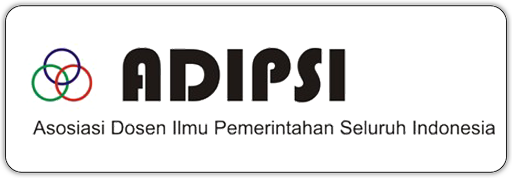INSTITUTIONAL VILLAGE STRENGTHENING MODEL IN COMPLETING STANDAR MINIMUM OF HUMAN DEVELOPMENT
DOI:
https://doi.org/10.31629/kemudi.v6i02.3317Keywords:
Human resource development, organizational strengthening, institutional reformAbstract
Abstract: In the current era of village autonomy, one of the things that needs to be studied is the ability of village government human resources to meet development goals, both locally, regionally and nationally. One of the development goals is determined by the success of human development. The fact that there is weak capacity of village government has an impact on the success of overall development. For this reason, this study aims to examine these phenomena. This study used a qualitative approach with the unit of analysis being the village government in Galesong Utara District, Takalar Regency. The research data consisted of primary and secondary data and were processed through data reduction. The results of this study indicate that the human resource capacity of the Dessa government in the District of North Galesong has not been maximized in carrying out the authority of the village so that it has an impact on the success of its development. This can be seen from the three main dimensions of institutional development, namely human resource development, institutional strengthening, and organizational reform. In terms of human resource development, village officials lack experience in making terms of reference for training so that the expected output is not achieved. In terms of organizational strengthening, it has not been implemented because the incentive system, mechanisms and mechanisms for utilization, leadership, and organizational culture are unclear and inadequate except for the management structure. In terms of organizational reform, it shows that it has not been able to adapt to changes because it does not have a program that is prepared to increase institutional capacity and human resources for village development. Thus, the researcher offers a model for implementing village government based on human resource development (HR). This model is expected to provide solutions to the implementation of Village governance in North Galesong District in implementing human development policies which include dimensions of education, health and economy as well as increasing community participation in the success of development programs.
Downloads
References
Grindle, M. S. (1997). Getting Good Government: Capacity Building in the Public Sectors of Developing Countries (Harvard Studies in International Development). Harvard University Press.
K.Yin, R. (2015). Studi Kasus , Desain dan Metode (15th ed.). RajagrafindoPersada.
Linda, I. (2019). PENGUATAN KAPASITAS PEMERINTAHAN DESA DI DESA. 6, 231–240.
Milton J Esman. (1965). nstitution Building in National Development : An Approach to Induced Social Change in Transitional Societies". Graduate School of Public and International Affairs (GSPIA),.
Neuman, W. L. (1997). Social Research Methods: Qualitative and Quantitative Approaches (7th ed.). PEARSON C U S T O M LIBRA R Y.
Rozy. (1991). Pembangunan Sistem dan Kebijakan Sumberdaya Manusia. UI-Bappenas.
Saul M.Katz. (1986). Model Pembangunan Kelembagaan (dalam Joseph W.Eaton , Pembangunan Kelembagaan dan Pembangunan Nasional). LP3S.
Tjokrowinoto, M. (1987). Politik pembangunan: sebuah analisis konsep arah dan strategi. Tiara Wacana.
Todaro, M. (2011). Pembangunan Ekonomi Dunia Ketiga. Erlangga.
UNDP. (1990a). Global Human Development Report. Human Resources Department. United Nations Development Programme (UNDP).
UNDP. (1990b). Human Development Report†United Nations Development Programme.
W.R.Scott. (2001). Institutions and Organizations, Thousand Oaks. Saga.













